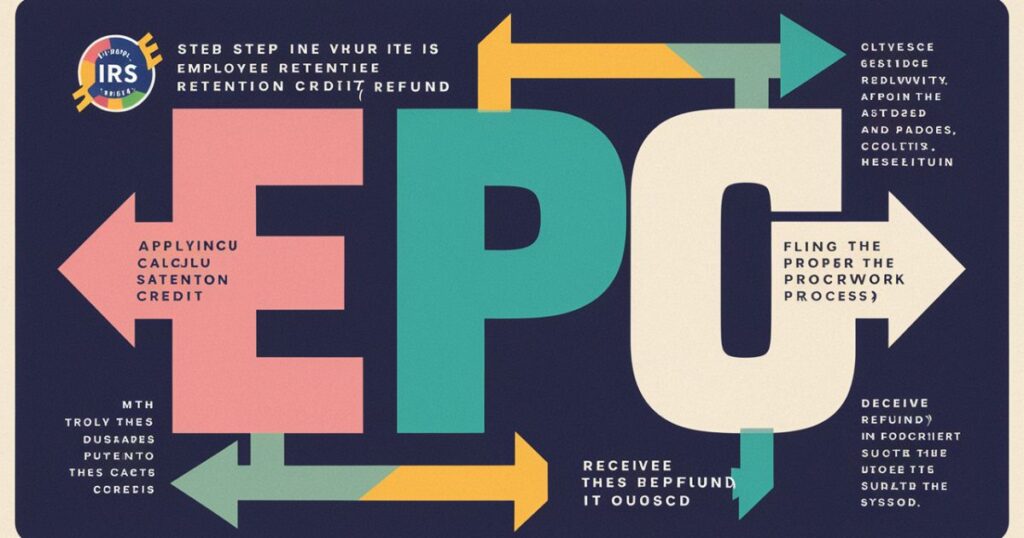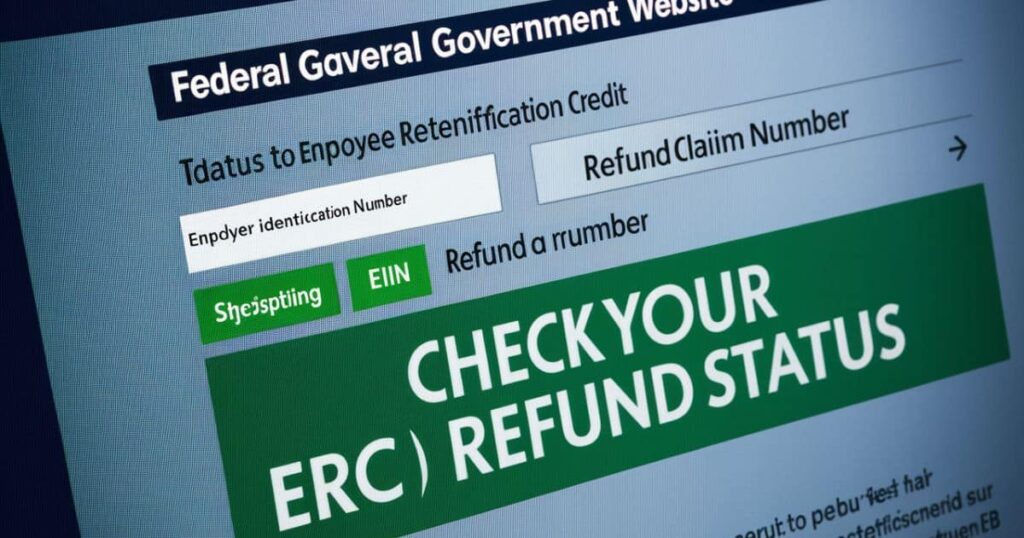In the wake of the COVID-19 pandemic, businesses across the United States faced unprecedented challenges. To support employers and encourage them to retain their valuable workforce during these trying times, the government introduced the Employee Retention Credit (ERC) as part of the CARES Act in 2020. If you’ve claimed this valuable tax credit, you’re likely eagerly awaiting your refund from the Internal Revenue Service (IRS). Fortunately, the agency has made it relatively straightforward to check the status of your ERC refund online. In this comprehensive article, we’ll guide you through the process step-by-step, ensuring you can stay informed and get your hands on those hard-earned funds as soon as possible.
What is the Employee Retention Credit (ERC)?
Before we dive into the refund status checking process, let’s take a moment to revisit what the Employee Retention Credit entails and why it was such a significant lifeline for businesses during the pandemic.
The ERC was designed to incentivize employers to retain their employees during the unprecedented economic challenges posed by COVID-19. Eligible employers could claim a refundable tax credit worth up to $7,000 per employee per quarter for qualifying wages paid between March 13, 2020, and September 30, 2021.
To qualify for the ERC, a business had to meet one of the following criteria:
- Suspended Operations: The business experienced a full or partial suspension of operations due to government orders related to COVID-19.
- Significant Decline in Gross Receipts: The business experienced a significant decline in gross receipts compared to the same quarter in 2019.
This credit provided a much-needed financial boost, helping businesses keep their workforce intact and weather the economic storm. By retaining their employees, businesses could maintain operational continuity and be better positioned for recovery once the pandemic subsided.
According to a study by the University of Chicago, the ERC played a crucial role in preventing job losses and supporting small businesses during the pandemic. The study estimated that the credit helped retain approximately 2.3 million jobs in the second quarter of 2020 alone.
Here’s an example of how the ERC impacted a small business:
“As a family-owned restaurant, we were hit hard by the pandemic. The Employee Retention Credit allowed us to keep our core staff employed, even during the months when we were forced to close our doors to indoor dining. Without the ERC, we would have had to lay off most of our loyal employees, which could have been devastating for our business in the long run.” – Sarah, Owner of a local restaurant
Understanding the IRS ERC Refund Process

If you’ve successfully claimed the ERC, the next step is to receive your refund from the IRS. However, it’s essential to understand that the refund process can take time, especially given the high volume of claims the agency has received.
Here’s a general overview of the expected timeline:
- Filing Period: The IRS typically processes refunds within 6-8 weeks of receiving your ERC claim, provided there are no errors or additional information required.
- Processing Time: Once your claim is approved, the IRS will issue your refund, which can take an additional 2-4 weeks to reach your bank account or mailing address.
While this timeline serves as a rough guide, it’s important to note that individual cases may vary. Factors such as the complexity of your claim, the overall volume of claims received by the IRS, and any additional verification or documentation required can impact the processing time.
Case Study: Refund Timeline for a Small Business
To illustrate the refund process, let’s consider the case of a small manufacturing company that claimed the ERC for the third and fourth quarters of 2020.
- March 15, 2021: The company filed their ERC claim for the third and fourth quarters of 2020, totaling $75,000.
- April 20, 2021: The IRS acknowledged receipt of the claim and began processing it.
- May 18, 2021: After approximately 8 weeks, the IRS approved the claim and issued the refund.
- June 5, 2021: The company received the $75,000 refund via direct deposit, around 3 weeks after the IRS issued it.
As you can see, the entire process took approximately 12 weeks from the initial filing to receiving the refund. While this timeline may seem lengthy, it’s essential to remember that the IRS is processing an unprecedented volume of ERC claims, and patience is key.
How to Check Your IRS ERC Refund Status Online
Now, let’s dive into the step-by-step process of checking your ERC refund status online using the IRS’s “Where’s My Refund?” tool:
- Visit the IRS Website: Navigate to the IRS website and locate the “Where’s My Refund?” tool, typically found under the “Refunds” section.
- Access the Tool: Click on the “Where’s My Refund?” link, which will take you to the dedicated page for checking your refund status.
- Enter Required Information: You’ll need to provide the following details:
- Your Social Security Number or Individual Taxpayer Identification Number (ITIN)
- Your filing status (e.g., single, married filing jointly, etc.)
- The exact refund amount you’re expecting
- Important Note: For the refund amount, you’ll need to enter the total amount you claimed for the ERC, not the amount you expect to receive after any taxes or other deductions.
- Submit and Interpret: After entering the required information, click “Submit.” The tool will display your refund status along with an explanation of what that status means.
Pro Tip: If you’ve recently filed your ERC claim and the “Where’s My Refund?” tool does not provide any information, don’t panic. It can take up to four weeks for your claim to show up in the system. The IRS recommends checking the tool once per week until your status appears.
Here’s an example of what the “Where’s My Refund?” tool might look like:
Show Image
Refund Status Explanations
The “Where’s My Refund?” tool will provide you with one of several refund status messages. Here’s what some of the most common messages mean:
- “Refund Approved”: Your refund has been approved, and you should receive it within the next 2-4 weeks. This status indicates that the IRS has processed your claim and determined that you are eligible for the ERC refund.
- “Refund Sent”: Your refund has been processed and is on its way to your bank account or mailing address. It should arrive within 1-2 weeks. This status means that the IRS has issued your refund, and you should receive it shortly.
- “Return Received”: The IRS has received your return and is processing it. This status indicates that your claim is in the initial stages of review, and you should continue checking for updates.
- “Tax Topic 152”: This message indicates that the IRS needs more information to process your refund, and you may need to contact them directly. It’s essential to respond promptly to any requests for additional documentation or clarification to avoid further delays.
If you receive a status message that is unclear or raises concerns, don’t hesitate to reach out to the IRS for clarification. They can provide guidance on the next steps and address any issues with your specific case.
Important Note: The “Where’s My Refund?” tool is updated once per week, typically on Wednesdays. If you check the tool multiple times within the same week, you may see the same status message until the next update.
Troubleshooting Common Issues

While the “Where’s My Refund?” tool is designed to be user-friendly, you may encounter some issues or roadblocks along the way. Here are some common problems and how to address them:
- Refund Status Not Updated: If you’ve been checking the tool regularly and your refund status hasn’t been updated in several weeks, it’s advisable to contact the IRS directly. You can reach them by phone at 1-800-829-1040 or visit your local IRS office. Be prepared to provide your ERC claim information and any documentation you may have.
- Error Messages: If you receive an error message when attempting to check your refund status, double-check the information you’ve entered (Social Security Number, filing status, refund amount). Ensure that you’re inputting the correct details as they appear on your ERC claim filing. If the issue persists, contact the IRS for assistance.
- Refund Delayed: If your refund seems to be taking longer than expected, there could be several reasons.
- Additional Verification or Documentation Required: The IRS may need additional information or documentation to process your claim fully. This could include payroll records, proof of eligibility, or other supporting materials.
- Processing Delays Due to High Claim Volumes: With the significant number of ERC claims filed, the IRS may be experiencing backlogs and delays in processing times. While frustrating, it’s important to remain patient and continue checking the status regularly.
- Issues with Your Claim that Need to be Resolved: In some cases, the IRS may have identified potential issues or discrepancies with your ERC claim that need to be addressed before the refund can be issued.
In such cases, the IRS will typically reach out to you directly for more information or clarification. Be sure to respond promptly to any requests to avoid further delays in processing your refund.
Case Study: Resolving a Delayed Refund
Let’s consider the case of a small manufacturing company that filed their ERC claim in February 2021 but experienced a significant delay in receiving their refund.
- February 15, 2021: The company filed their ERC claim for the third and fourth quarters of 2020, totaling $100,000.
- March 20, 2021: The IRS acknowledged receipt of the claim and began processing it.
- May 10, 2021: After several weeks with no status update, the company contacted the IRS to inquire about the delay.
- May 15, 2021: The IRS informed the company that additional documentation was required to verify their eligibility for the ERC. Specifically, they needed to provide payroll records and proof of the government-mandated suspension of operations.
- June 1, 2021: The company submitted the requested documentation to the IRS.
- July 10, 2021: After reviewing the additional materials, the IRS approved the claim and issued the $100,000 refund.
- July 25, 2021: The company received the refund via direct deposit, approximately 5 months after initially filing their claim.
While this case involved a significant delay, it highlights the importance of promptly responding to any requests from the IRS and providing the necessary documentation to support your ERC claim. By working collaboratively with the agency, the company was eventually able to receive their full refund, albeit after a longer-than-expected processing time.
Read This Post: Letter From Landlord Confirming Tenancy
Maximizing Your ERC Claim
While the focus of this article is on checking your ERC refund status, it’s essential to ensure you’ve maximized your claim in the first place. Here are a few tips to keep in mind:
- Accurate Record-Keeping: Maintain detailed records of your eligible wages, employee counts, and any other relevant information that supports your ERC claim. This documentation can be invaluable if the IRS requests additional verification. For example, you should keep accurate payroll records, including:
- Employee names and Social Security numbers
- Wages paid during the eligible periods
- Hours worked by each employee
- Any documentation related to suspended operations or significant declines in gross receipts
- Organizing and maintaining these records in a secure and accessible manner can streamline the verification process and help ensure you receive the full refund you’re entitled to.
- Seek Professional Assistance: If you’re unsure about your eligibility or have complex circumstances, consider seeking guidance from a tax professional or ERC consultant. Their expertise can help ensure you claim the maximum credit you’re entitled to while staying compliant with all regulations. For instance, if your business experienced partial suspensions or fluctuations in gross receipts, a professional can help you navigate the nuances of the ERC guidelines and maximize your claim.
“As a small business owner, the ERC regulations seemed overwhelming at first. But working with a knowledgeable tax consultant made all the difference. They helped us identify eligible wages and claim the full credit we deserved, which provided a much-needed financial boost during the pandemic.” – John, Owner of a small retail store - Stay Updated: Tax laws and regulations related to the ERC can change over time. Stay informed about any updates or extensions to the program to take advantage of any additional opportunities. For example, in December 2022, the IRS issued guidance allowing certain businesses to claim the ERC for the first three quarters of 2021, even if they had previously been ineligible. Staying up-to-date on such changes can help you maximize your refund potential.
By following these best practices, you can maximize your ERC claim and increase the likelihood of a smooth refund process.
Conclusion
Checking the status of your IRS Employee Retention Credit refund is a crucial step in ensuring you receive the funds you’re owed in a timely manner. By following the simple steps outlined in this article and utilizing the “Where’s My Refund?” tool, you can stay informed throughout the process.
Remember, patience and perseverance are key when dealing with the IRS. If you encounter any issues or delays, don’t hesitate to reach out to the agency for assistance. Providing clear documentation and promptly responding to any requests for additional information can help resolve any roadblocks and expedite the refund process.
With the right approach and attention to detail, you can successfully navigate the ERC refund process and secure the financial support your business needs to thrive in the post-pandemic era. The ERC was designed to help businesses retain their valuable workforce during challenging times, and ensuring you receive your full refund is an essential step in realizing that goal.
So, whether you’re a small business owner, a large corporation, or an individual taxpayer, take the time to understand the ERC refund process and stay proactive in checking your status. By doing so, you can maximize the benefits of this valuable tax credit and position your business for continued success in the years to come.







